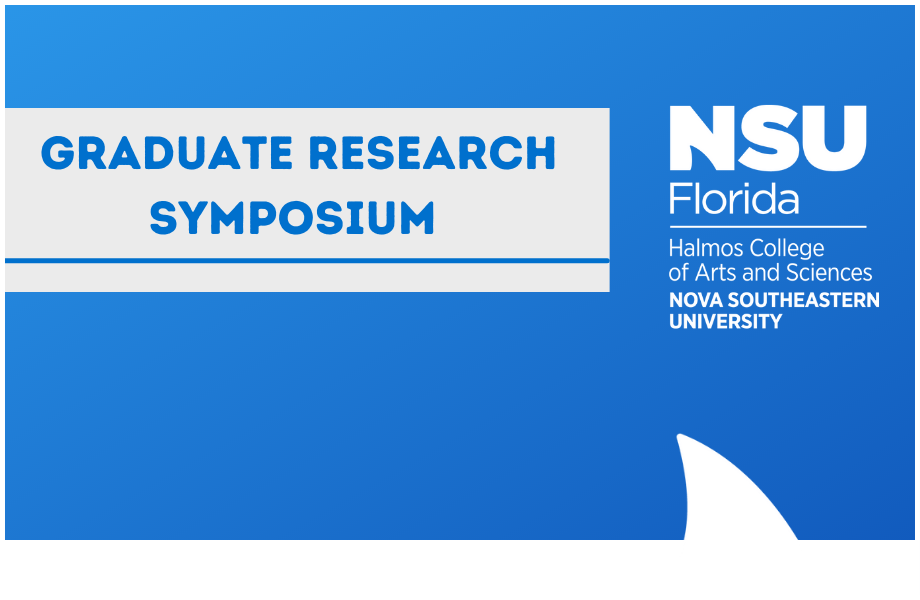Heavy Metal Accumulation in Seagrasses in Southeastern Florida
Location
Guy Harvey Oceanographic Center Facility
Start
1-30-2018 2:30 PM
End
1-30-2018 2:45 PM
Type of Presentation
Oral Presentation
Abstract
Seagrass beds are among the most ecologically important systems in the marine environment. They provide the primary production to nearby coral reef and mangrove communities, and comprise a large component of the diets of many marine organisms including fishes, small invertebrate species, and many protected species such as manatees and sea turtles. This consumption provides a pathway for any contaminants in the seagrasses to enter the marine food web. The coastal location of seagrass beds causes them to be especially susceptible to pollution, including accumulation of heavy metals, which has been shown to cause many adverse health effects in the seagrasses and marine organisms that feed on them. This study assessed the heavy metal concentrations of seagrasses in three regional locations in South Florida, the Port of Miami, Card Sound Aquatic Preserve, and Florida Bay. Three species of seagrasses, Thalassia testudinum, Halodule wrightii, and Syringodium filiforme, which comprise the majority of South Florida seagrass beds, were collected monthly for a period of one year and analyzed for ten heavy metals (arsenic (As), cadmium (Cd), copper (Cu), iron (Fe), mercury (Hg), manganese (Mn), nickel (Ni), lead (Pb), selenium (Se), zinc (Zn)). Concentrations were compared across locations, season, species, and plant part. Results indicated that heavy metals with the highest average concentrations were iron (222.38 µg/g), manganese (32.40 µg/g), and zinc (76.03 µg/g). All three of these heavy metals are known to be a result of agriculture activities, and are likely related to the high volume of fertilizer, herbicide, and pesticide use in South Florida. These three heavy metals were also found to be significantly higher in seagrass blades with attached epiphytes, suggesting that the epiphytes may be a major source of heavy metals to grazing marine organisms.
Heavy Metal Accumulation in Seagrasses in Southeastern Florida
Guy Harvey Oceanographic Center Facility
Seagrass beds are among the most ecologically important systems in the marine environment. They provide the primary production to nearby coral reef and mangrove communities, and comprise a large component of the diets of many marine organisms including fishes, small invertebrate species, and many protected species such as manatees and sea turtles. This consumption provides a pathway for any contaminants in the seagrasses to enter the marine food web. The coastal location of seagrass beds causes them to be especially susceptible to pollution, including accumulation of heavy metals, which has been shown to cause many adverse health effects in the seagrasses and marine organisms that feed on them. This study assessed the heavy metal concentrations of seagrasses in three regional locations in South Florida, the Port of Miami, Card Sound Aquatic Preserve, and Florida Bay. Three species of seagrasses, Thalassia testudinum, Halodule wrightii, and Syringodium filiforme, which comprise the majority of South Florida seagrass beds, were collected monthly for a period of one year and analyzed for ten heavy metals (arsenic (As), cadmium (Cd), copper (Cu), iron (Fe), mercury (Hg), manganese (Mn), nickel (Ni), lead (Pb), selenium (Se), zinc (Zn)). Concentrations were compared across locations, season, species, and plant part. Results indicated that heavy metals with the highest average concentrations were iron (222.38 µg/g), manganese (32.40 µg/g), and zinc (76.03 µg/g). All three of these heavy metals are known to be a result of agriculture activities, and are likely related to the high volume of fertilizer, herbicide, and pesticide use in South Florida. These three heavy metals were also found to be significantly higher in seagrass blades with attached epiphytes, suggesting that the epiphytes may be a major source of heavy metals to grazing marine organisms.


